
Roberto Gastone Zeffiro Rossellini was an Italian film director, screenwriter and producer. He was one of the most prominent directors of the Italian neorealist cinema, contributing to the movement with films such as Rome, Open City (1945), Paisan (1946), and Germany, Year Zero (1948). He is also known for his films starring Ingrid Bergman, Stromboli (1950), Europe '51 (1952), Journey to Italy (1954), Fear (1954), and Joan of Arc at the Stake (1954).

Italian neorealism, also known as the Golden Age, was a national film movement characterized by stories set amongst the poor and the working class. They are filmed on location, frequently with non-professional actors. They primarily address the difficult economic and moral conditions of post-World War II Italy, representing changes in the Italian psyche and conditions of everyday life, including poverty, oppression, injustice and desperation.

Rome, Open City, also released as Open City, is a 1945 Italian neorealist war drama film directed by Roberto Rossellini and co-written by Sergio Amidei, Celeste Negarville and Federico Fellini. Set in Rome in 1944, the film follows a diverse group of characters coping under the Nazi occupation, and centers on a Resistance fighter trying to escape the city with the help of a Catholic priest. The title refers to the status of Rome as an open city following its declaration as such on 14 August 1943. The film is the first in Rosselini's "Neorealist Trilogy", followed by Paisan (1946) and Germany, Year Zero (1948).

Cinema of Europe refers to the film industries and films produced in the continent of Europe.

The Flowers of St. Francis is a 1950 film directed by Roberto Rossellini and co-written by Federico Fellini. The film is based on two books, the 14th-century novel Fioretti di San Francesco and La Vita di Frate Ginepro, both of which relate the life and work of St. Francis and the early Franciscans. I Fioretti is composed of 78 small chapters. The novel as a whole is less biographical and instead focuses on relating tales of the life of St. Francis and his followers. The movie follows the same premise, though rather than relating all 78 chapters, it focuses instead on nine of them. Each chapter is composed in the style of a parable and, like parables, contains a moral theme. Every new scene transitions with a chapter marker, a device that directly relates the film to the novel. On October 6, 1952, when the movie debuted in America, where the novel was much less known, the chapter markers were removed.

Europe '51, also known as The Greatest Love, is a 1952 Italian neorealist film directed by Roberto Rossellini, starring Ingrid Bergman and Alexander Knox. The film follows an industrialist's wife who, after the death of her young son, turns towards a rigorous humanitarianism. In 2008, the film was included on the Italian Ministry of Cultural Heritage’s 100 Italian films to be saved, a list of 100 films that "have changed the collective memory of the country between 1942 and 1978."
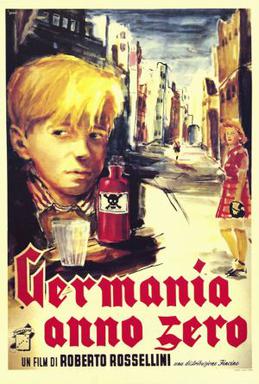
Germany, Year Zero is a 1948 film directed by Roberto Rossellini, and is the final film in Rossellini's unofficial war film trilogy, following Rome, Open City and Paisà. Germany Year Zero takes place in Allied-occupied Germany, unlike the others, which take place in German-occupied Rome and during the Allied invasion of Italy, respectively.

Marilyn Buferd was an American film and television actress as well as the winner of both the Miss California and Miss America pageants of 1946. During the latter half of the 1940s and throughout the 1950s, she performed in nearly two dozen American, Italian, and French films, including Touchez pas au grisbi opposite Jean Gabin (1954). Buford also appeared in several television series originally broadcast in the 1950s, such as The Millionaire, Highway Patrol, Schlitz Playhouse, The Ford Television Theatre, and Orient Express.

Paisan is a 1946 Italian neorealist war drama film directed by Roberto Rossellini. In six independent episodes, it tells of the Liberation of Italy by the Allied forces during the late stage of World War II. The film premiered at the Venice International Film Festival and received numerous national and international prizes.

General Della Rovere is a 1959 Italian–French drama film directed by Roberto Rossellini. The film is based on a story by Indro Montanelli which was in turn based on a true story.
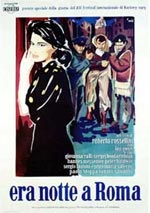
Escape by Night, also titled Blackout in Rome, is a 1960 Italian–French war drama film directed by Roberto Rossellini.
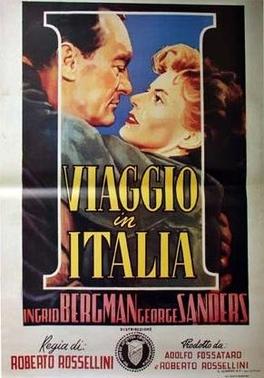
Journey to Italy, also known as Voyage to Italy, is a 1954 drama film directed by Roberto Rossellini. Ingrid Bergman and George Sanders play Katherine and Alex Joyce, a childless English married couple on a trip to Italy whose marriage is on the point of collapse until they are miraculously reconciled. The film was written by Rossellini and Vitaliano Brancati, but is loosely based on the 1934 novel Duo by Colette. Although the film was an Italian production, its dialogue was in English. The first theatrical release was in Italy under the title Viaggio in Italia; the dialogue had been dubbed into Italian.
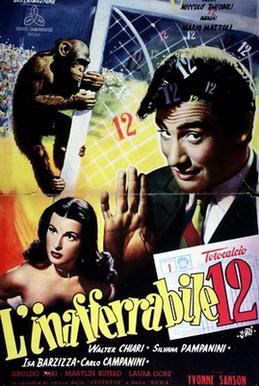
The Elusive Twelve is a 1950 Italian comedy film directed by Mario Mattoli and starring Walter Chiari, Silvana Pampanini and Isa Barzizza. It was shot at the Farnesina Studios of Titanus in Rome. The film's sets were designed by the art director Piero Filippone. It earned 400 million lira at the domestic box office.

I'm the Capataz is a 1951 Italian western-comedy film directed by Giorgio Simonelli, and starring Renato Rascel, Silvana Pampanini and Marilyn Buferd.
Luciano Serra, Pilot is a 1938 Italian war drama film directed by Goffredo Alessandrini and starring Amedeo Nazzari, Germana Paolieri and Roberto Villa.
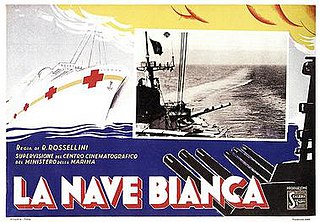
The White Ship is a 1941 Italian war film directed by Roberto Rossellini. Its cast was made up entirely of amateur actors, many of them the real crew of a hospital ship of the Italian navy. The production was a work of propaganda intended to support the war aims of the Fascist Italian regime during the Second World War. It was made with the close co-operation of the Italian Navy, particularly Francesco De Robertis. Vittorio Mussolini, the son of the Italian dictator, was also a supporter of the project.
The Man with a Cross is a 1943 Italian war film directed by Roberto Rossellini and starring Alberto Tavazzi, Roswita Schmidt and Attilio Dottesio. It was the final part of Rossellini's "Fascist trilogy" following The White Ship (1941) and A Pilot Returns (1942). It is loosely inspired by Reginaldo Giuliani, an Italian military chaplain who had been killed on active service.
William Tubbs was an American stage and film actor. He appeared in a number of European films in the years after the Second World War, including several by Roberto Rossellini.
Jolanda Benvenuti was an Italian film editor. She worked on more than a 150 productions during her career, including several films directed by Roberto Rossellini.
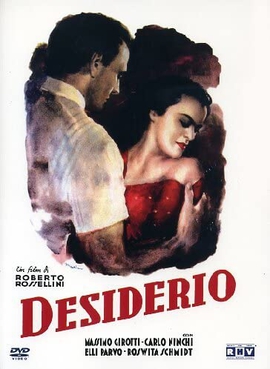
Desire is a 1946 Italian melodrama film directed by Marcello Pagliero and Roberto Rossellini and starring Massimo Girotti, Elli Parvo and Carlo Ninchi.















